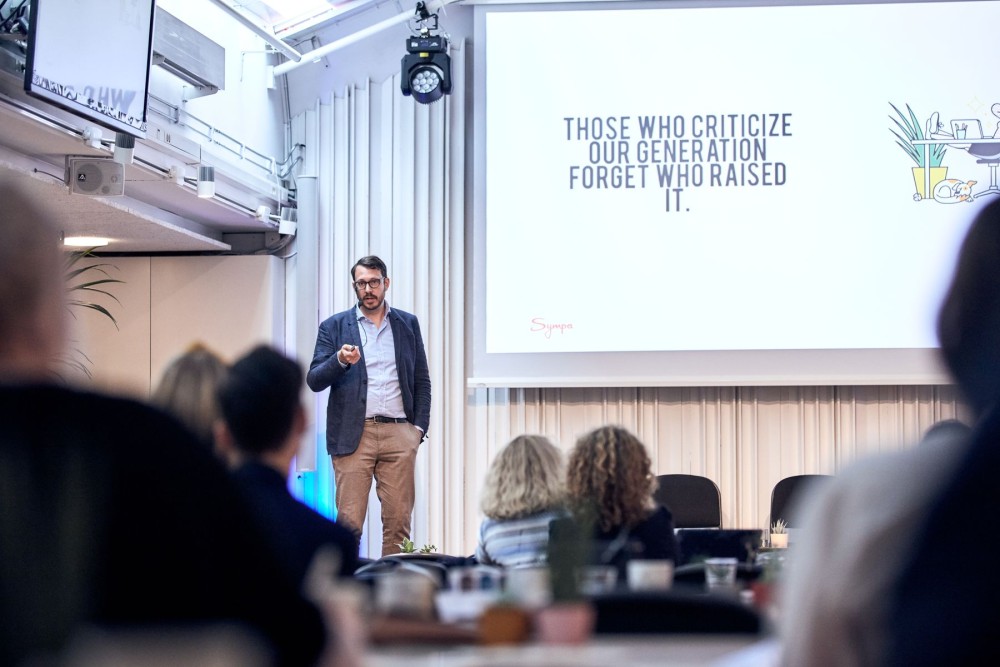The first word that people use to describe Millennials is tech-savvy or tech-literate. The majority of Millennials don’t remember a time when there was no internet or technology. Although they were born before the tech revolution caught on, they pretty quickly grew into the technology, and it became their second nature.
Born between 1982 and 2000, Millennials, or the alternative term Generation Y are reaching managerial positions responsible for leading the next Generation Z that is entering the workforce.


Compared to their Millennial predecessors, Generation Z is the first fully digital generation, true digital natives since they came into a world dominated by a full-blown technological revolution.
In terms of HR and people analytics, the same rules that applied for the workforce before them, simply don’t apply anymore. They expect employers to be digital, technology-driven and technology driving. They take the tools available to us for granted and can’t understand why their bosses wouldn’t use them. If they see themselves as more tech-savvy than their superiors, they start to wonder why they aren’t in charge, described Björn Lorentzon, Business Development Manager at Sympa.
Himself belonging to Generation Y, Björn explored HR’s role in leading tech-literate generations and the role of HR technology in meeting the expectations of the most tech-literate generation ever to walk into an office at the Nordic People Analytics Summit 2019.


Characteristics of Millennials
At a professional level, Björn highlights several Millennial characteristics that HR should be aware of:
- They really want feedback.
- They don’t want snail mail advertising.
- They work for their own self-fulfilment, and not for an employer.
- They are more loyal to their personal network than their employer. (They share more information on LinkedIn than on employee engagement surveys.)
- They want clear boundaries between work and personal life.
- They change jobs more frequently.
- They have no problem getting criticised.
- Generation Y is both digital and analogue. The older Millennials have both worked with pen and paper and computers at the university.
- They are brave.
However, Björn disagrees with the last statement. According to him, being brave means to do something you are afraid of, like riding a bike on the edge of a cliff. But Millennials are not afraid to speak out when they don’t feel like they are paid enough or treated fairly at work. Compared to their parents, the Baby Boomers, Millennials are not afraid to challenge norms and do things differently. The reason is that as a generation, Millennials have never been threatened by war, or felt unsafe where they live, speaking mainly about Sweden and the Nordics.


HR analytics and tech-literate generations
Considering the psychological and behavioural characteristics of the tech-literate generations that HR should deal with, Björn next examines whether the HR and people analytics principles we took at face value truly hold water.
Namely, he asks “Can we really measure people, and what do the numbers really mean?” He states that psychometrics has been challenged after Mensa, the IQ organisation, admitted that their tests were not 100% accurate.
Because of the disillusionment with psychometric, but also because Millennials and Gen Zers have incredibly low attention spans, ESI (Employee Satisfaction Index) surveys are not enough to measure people, but they are becoming “pulse” surveys. Instead, other tools are needed because people are just getting tired of surveys. As Björn points out, today people answer only 30-40 questions, as opposed to 80 questions 20 years ago. This leads to people only filling in long questionnaires and not answering them properly. This fact also highlights the importance of the position of questions, which was not relevant 20 years ago.
When we are trying to measure people with numbers, it can create a so-called “North Pole Effect”, Björn explains. The engagement surveys measure employee attitude, and they produce the North Pole Effect. This is because, if we get an initial satisfaction score of 95 on the first run, every time we run the survey afterwards, the score drops by several points. And after a dozen of times, you can’t get the score to the initial 95% satisfaction score, the reference to the North Pole being the only place in the world from where you can only go south. The solution Björn proposes is that the questions need to be rephrased so that we have another North Pole to conquer.


Frequency and timing are other aspects that impact the survey score. Running a survey closely after an organisation-wide event would give more positive results compared to any other period as people are in a better mood.
Björn claims that there are only two favourable months in the whole year to do surveys in Sweden, namely October and March. All the other months have deviations in terms of holidays and non-working days.
People analytics and ESIs are still relevant
However, HR & people analytics is still essential, and ESI surveys for that matter. Companies need to establish what are the important KPIs to track. As Björn points out, you need to have people analytics master data, because it’s the enabler of all the fun stuff.
The problem is not the answer; the problem is the question, states Björn. If business leaders don’t get some relevant insight from, e.g. headcount, then this KPI needs to be challenged. A different KPI, such as hours worked, may be a more relevant measurement. And HR needs to make sure that stakeholders have the right people analytics measurements to work with.


People analytics tips for success for managing tech-literate employees
The digitalisation of organisations and the HR department included is unavoidable, especially when managing tech-literate generations. These are some for successful tips for implementing digitalisation and people analytics to lead digital native generations:
1. Digitalisation ≠ computerisation
But digital transformation shouldn’t be confused with computerisation. Transforming paper contracts in digital format and putting them in a computer is not digitalisation. For Björn, it’s all about organisational efficiency and how we can optimise the way we work. With the computerisation of analogue processes, we run the risk of inheriting the bad stuff from them in the digital environment.
2. HR transformation is a journey
Ultimately, like every other transformation, HR digital transformation is a journey. You can’t plan ahead for which steps to take, just start the journey and learn along the way.
3. Start with small steps
You can incorporate your company values in your digital tools so that people will see them more often than if they are put on a wall.
4. Opportunity to change business culture
Digital tools are a chance to create a pro-technology mindset among all employees, not just digital natives. Help your employees understand that technology is there to free them of the tedious tasks they don’t want to be doing and makes their lives easier. You can also connect your digital tools with your employer branding.
5. Designate non-HR champions
You need to have people outside of the HR department who will evangelise and encourage the transformation and change of culture.














Add comment